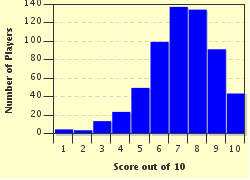Quiz Answer Key and Fun Facts
1. One rubs cold cream on one's face, pours whole cream on one's cereal, and listens to Cream on one's stereo (if one is into late-1960s British rock bands). What does one do if the recipe instructs one to cream butter and sugar?
2. For a special occasion, the chef wants to serve a particular dish flambé. That sounds fancy but what does it mean?
3. A chef visiting from Japan rejects the soy sauce you bring her and asks for tamari. What is tamari?
4. One may mince words or mince across the room. According to Edward Lear, "They dined on mince, and slices of quince, which they ate with a runcible spoon." If chef directs you to mince a food ingredient, what should you do to it?
5. Hardball is the game of baseball played with a small hard ball, as opposed to the game of softball which is played with a larger softer ball. To "play hardball" is also to engage in ruthless, uncompromising behavior, particularly in business or politics. In candymaking, what is the temperature of sugar syrup at the hard ball stage?
6. It is known as bacalao in Spanish, bakailao in Basque, bacallà in Catalan, baccalà in Italian, bacalhau in Portuguese, and bakalar in Croatian. What is it known as in English?
7. Every professional kitchen keeps a supply of cots. What is a "cot" in this culinary sense?
8. A chef visiting from France suggests that, as a special, you make croquettes. Bonne idée, but what's a croquette?
9. Starch extracted from the tapioca root must be processed to remove a toxin (a compound of cyanide) before being formed into powder or little spherical balls of dried starch. What are these balls called?
10. Bertrand Russell said "What hunger is in relation to food, zest is in relation to life." Lewis Carroll wrote "Epithets, like pepper, give zest to what you write; and, if you strew them sparely, they whet the appetite: but if you lay them on too thick, you spoil the matter quite!" In cookery, what is a zester?
Source: Author
FatherSteve
This quiz was reviewed by FunTrivia editor
gtho4 before going online.
Any errors found in FunTrivia content are routinely corrected through our feedback system.

